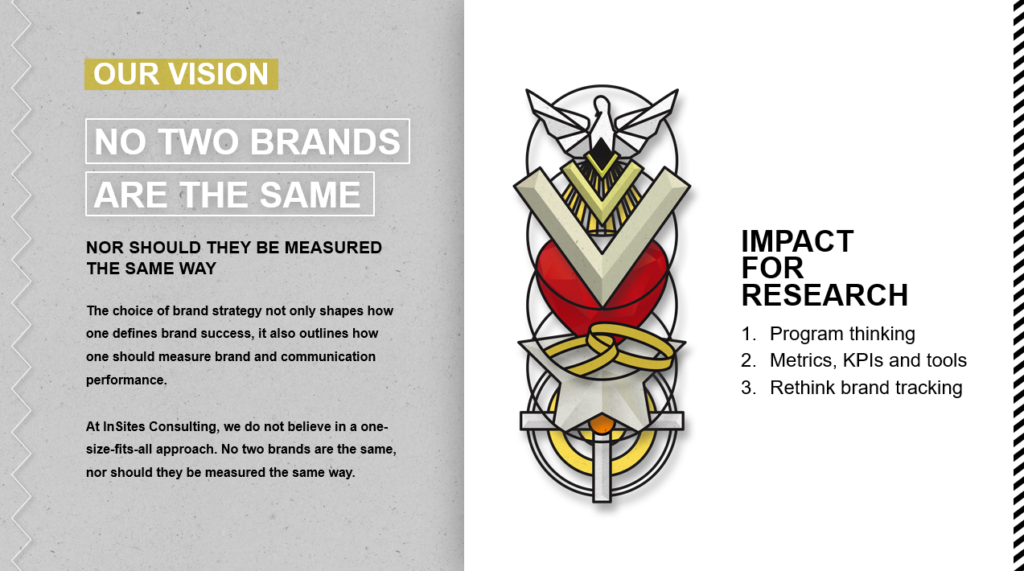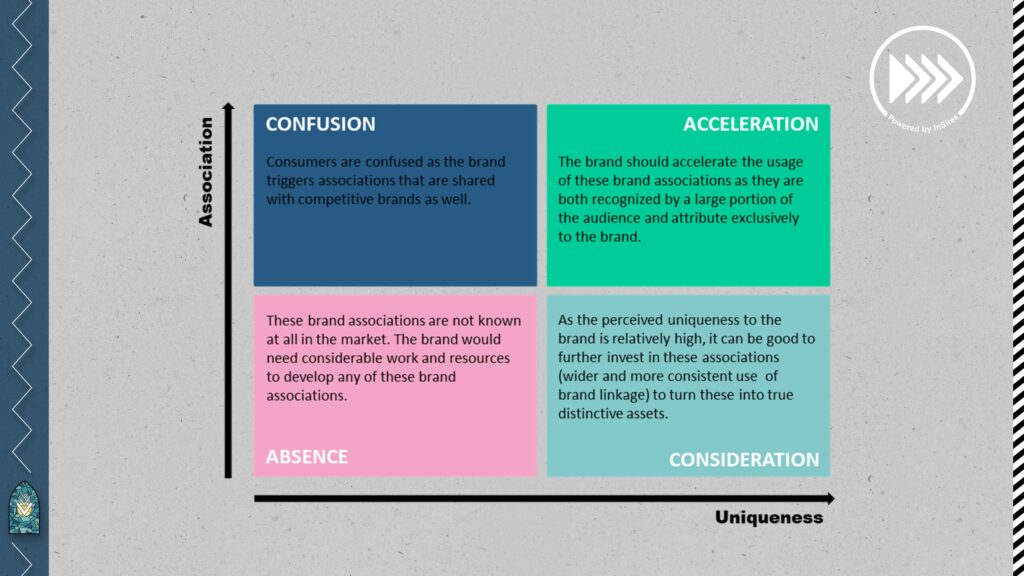No two brands are the same, so why are they measured in the same way?
No two brands are the same – they have different objectives, serve different needs, are in different stages of their product life cycle, face different levels of competitive intensity, are run by different marketers with their own strategies etc. So why is it that we measure them the same way? Why do market researchers have the tendency to push standardized research approaches across brands regardless of a brand’s context?

As elaborated in our Brand Religions bookzine, there is an abundance of books and theories guiding marketers in building, crafting and growing strong brands. We found that we can bundle these various streams of thought in five brand religions: the Classic, Influencer, Relationship, Experience and Penetration Religions, each providing a different viewpoint on what defines brand success, what to aim for, and which key performance indicators to pursue. Key for brands is to focus and choose a ‘religion’, which can be a pure form of one of the above or a mix of (non-contradictory) religion beliefs. This choice of brand religion (mix) not only shapes how one defines brand success, it also outlines how one should measure brand and communication performance, hence guiding one’s research design.
Advertising research
Consider advertising research, where many approaches focus on ad liking and recall. What defines a good advertisement depends on the brand strategy and thus the brand religion framework. A brand that follows the ‘Penetration Religion’ will focus on creating advertisement messages that strengthen its ‘mental availability’. This school of thought emphasizes the importance of distinctive assets that signal the brand name to consumers and hence serve as memory shortcuts, allowing consumers to make buying decisions rapidly and easily. Brands should use these assets in communication (and packaging) consistently, in order to build memory structures in the consumers’ minds over time. The research design should reflect this thinking and test if assets are strongly and uniquely associated with a brand – e.g. by means of putting participants under time or cognitive pressure.

Brands that pursue the ‘Relationship Religion’, on the other hand, will focus more on the emotions triggered by an ad. The ‘Relationship Religion’ stipulates that, ultimately, consumers are driven by emotions and feel emotionally connected with brands. The goal of a brand is to build a brand-consumer relationship. Therefore, advertising here is aimed at building and strengthening that emotional connection with consumers. The research design will not focus on assets, but rather on emotions, for example by using an indirect measure such as facial coding or an implicit association task, in order to avoid rationalization.
A different research approach is also needed for brands pursuing the ’Influencer Religion’ strategy. Here, the focus of the ad is to fuel conversations around brands, hence requiring research focus on an ad’s conversation potential. It is clear that depending on one’s strategy, advertising has a different focus, and therefore must also be measured differently.
Brand tracking
The same can be said for trackers. They serve as an ongoing finger on the pulse, gaining insights into how a brand is performing in line with brand strategy. However, trackers are probably one of the most static, repetitive and unidimensional research solutions out there. If one were to compare two random brand trackers, chances are they are both characterized by a similar research design and often centered around measuring the brand funnel. This is a typical ‘Classic Religion’ framework, which emphasizes that it all starts with building awareness, to then move to consideration, trial, usage and preference, ending with loyalty to build brand equity. Whilst the classic thinking is still relevant today, we see many clients shift away from these principles, embracing new beliefs beyond the ‘Kotlerian thinking’. If brands are shifting brand strategy frameworks, why are trackers still reflecting the classic marketing principles? Trackers should be seen as a composite of all metrics and KPIs that are important for brands to assess the extent to which they are on par with their brand strategy. Rather than considering a tracker as static and unidimensional, it should be a modular build-up where the KPIs reflect the relevant dimensions of brand success.
In essence, what one measures and how all links back to one’s brand strategy. All brands are different, and brand success is defined differently. Before starting research, it is essential to understand what brand religion (mix) is right for your brand.




